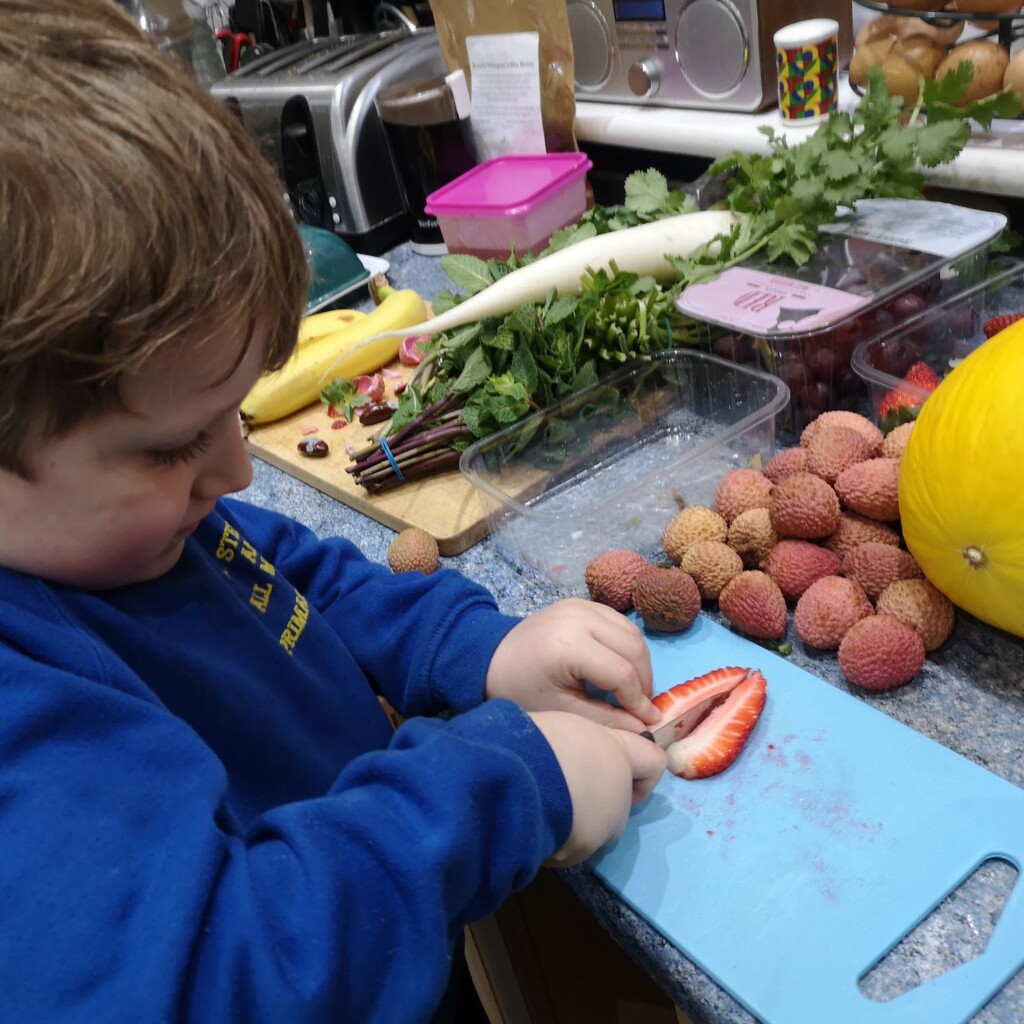The sense of taste
The gustatory sense, or the sense of taste is one of the five better known senses. There are taste buds all over the tongue and inside of the mouth. These are responsible for detecting taste of the chemicals in foods and other substances.
Taste contributes to the enjoyment of food, helps to protect us from poisons, and allows our body to judge what kind of nutrition a food might provide. Taste sensitivity and preferences are highly individual. What appeals to one person sounds horrible to another!
Taste and flavour
The tongue perceives tastes; these are sweet, sour, salt, bitter and savoury (sometimes called umami). However, we experience a diverse and nuanced world of flavour in our foods. This is because the sense of taste works together with the sense of smell to detect flavours. Together these two senses are known as the chemosensory system. The interrelationship of these senses is why losing your sense of smell means you also lose much of your sense of taste.
Flavours are a combination of scent and taste, and are also influenced by the food’s texture.
Taste sensitivity
As with all senses everyone has a different level of sensitivity. So, some people experience much more intense tastes than others. Those who have very high sensitivity are known as hypersensitive. Other people, however, have lower levels of taste sensitivity and are known as hyposensitive.
Supertasters
Some people are known as supertasters. This means that they can taste a substance called PTC, and have an increased taste sensitivity.
Taste, protection and picky eating
One of the purposes of our sense of taste is protection. Bitterness indicates that something may be toxic. Bitter foods, such as green leafy vegetables containing chlorophyll, are often rejected by those with sensitive taste. Young children are more sensitive to taste than adults. Toddlers often instinctively reject bitter foods. This is actually an evolutionarily protective measure. Toddlers pottering around independently would be at risk if they ate unsafe leaves, so in a hunter gatherer society aversion to bitterness that lasts a few years protected young children from likely sources of toxicity. This aversion to bitterness usually wears off between age 5-7, if they are not pressured to eat disliked foods. This is often labelled as picky eating in toddlers.
Taste disorders
Some conditions can result in a total or partial loss of the sense of taste. These are known respectively as ageusia and hypogeusia.
Phantom taste disorders are when you can taste something that isn’t there, usually it is unpleasant. There are a number of possible causes, for example, medication, respiratory illness, or head injury.
Gustatory regulation
Hypersensitive behaviours
Taste, smell and oral tactile (texture) hypersensitivity are all sensory sensitivities that result in regulatory behaviours such as
- Gagging easily, sometimes at the mere thought of certain foods
- Preferring not to mix textures
- Refusing many types of food
- An aversion to certain textures, tastes or temperatures of food
- Appearing to be fussy eaters (diet often referred to as beige)
- Struggling to brush teeth due to aversion of items in their mouth
- Refusing to lick items such as stamps or envelopes
- Need to control mealtime experiences, such as when and where, and with what (e.g. cutlery) they eat.
Hyposensitive behaviours
People who are less sensitive to taste, smell and oral textures may exhibit sensory seeking behaviours, including, for example,
- Constantly putting objects, fingers, or food in their mouth
- Chewing items such as pens, clothing, fingers or hair
- Overstuffing their mouths at mealtimes
- Preferring more extreme tasting foods
- Adding high levels of condiments or seasoning to food
- Licking, tasting or smelling things that others wouldn’t
Using the sense of taste
Having fun with taste
It can be enjoyable to try new foods and flavours. However, it is only fun when done in a low pressure and stress free way. People with high sensitivities are less likely to try, or enjoy new foods if they feel pressured into eating. Offering a range of foods, or shopping and cooking with children and allowing them to taste safe ingredients can be a good way for children (and adults) to try new tastes.
Guess what it is: Tasting unknown foods, juices or smoothies and trying to guess what they are. Again, only one to play when children are happy to engage.
Eating the rainbow is a popular activity to get children thinking about eating a range of foods and flavours. This does not have to be in a single meal. It can even be modified to simply thinking of a food they like for each colour of the rainbow. Consider what other foods are different colours and whether they would like to try them.
Toddler eating: 10 tips for healthy eating relationships and Picky eating: toddlers and adults are excellent resources for finding out more about taste preferences and supporting healthy eating development.

Calming and taste
As with smell, taste or more accurately flavour perception is linked to strong associations and memories. One of the earliest taste associations with calming is with milk.
Babies often fall asleep whilst feeding, and whether bottle feeding, or feeding from the breast/chest milk becomes associated with calming, comfort and connection for most babies. Milk feeding for calming, especially if breastfeeding or chestfeeding, can persist for a long time. Natural human weaning age is between 3 and 5.
Many foods and drinks thought of as calming, such as milk contain tryptophan. Tryptophan is required to create melatonin, the sleep hormone. This is not really using the sense of taste for calming, however.
Comfort eating
When we eat certain foods, especially sweet tasting foods, our brain releases dopamine. Historically sweet foods were associated with scarcity, like berries that were only available for a brief time in the year. The brain rewarding us with a. hit of dopamine made us more likely to seek out that foodstuff.
This is often referred to as comfort eating, and is widely vilified. The thing is, as long as we use this tool mindfully, there’s nothing wrong with using food to alter our mental state. Compulsively comfort eating, or comfort eating rather than addressing issues or seeking support for mental health conditions can be a problem. However, on its own, recognising, and even using the dopamine reward from eating sweet foods is not a bad thing.










Responses